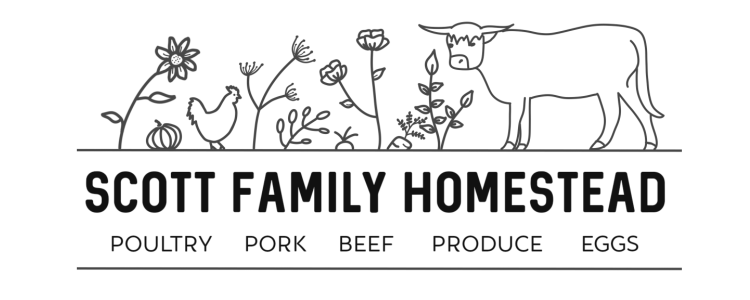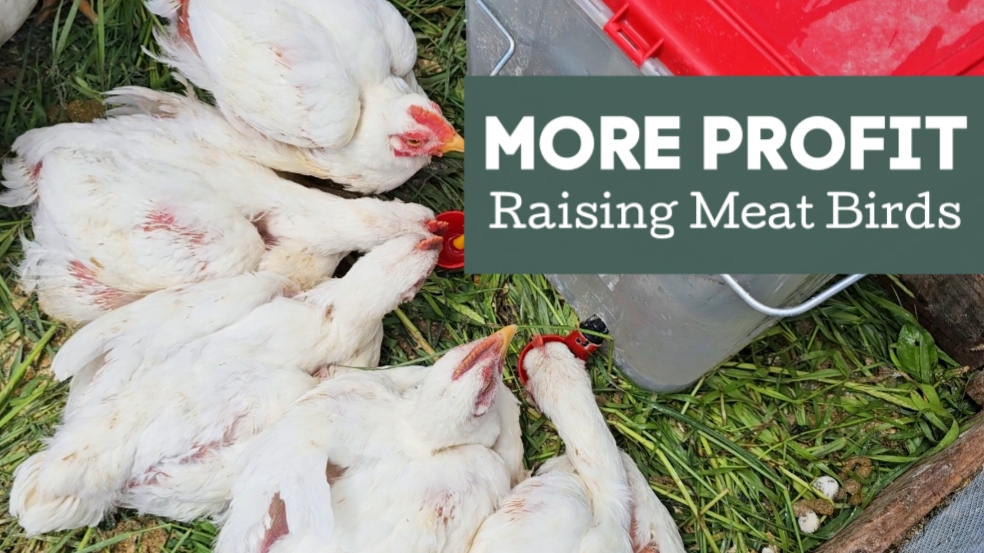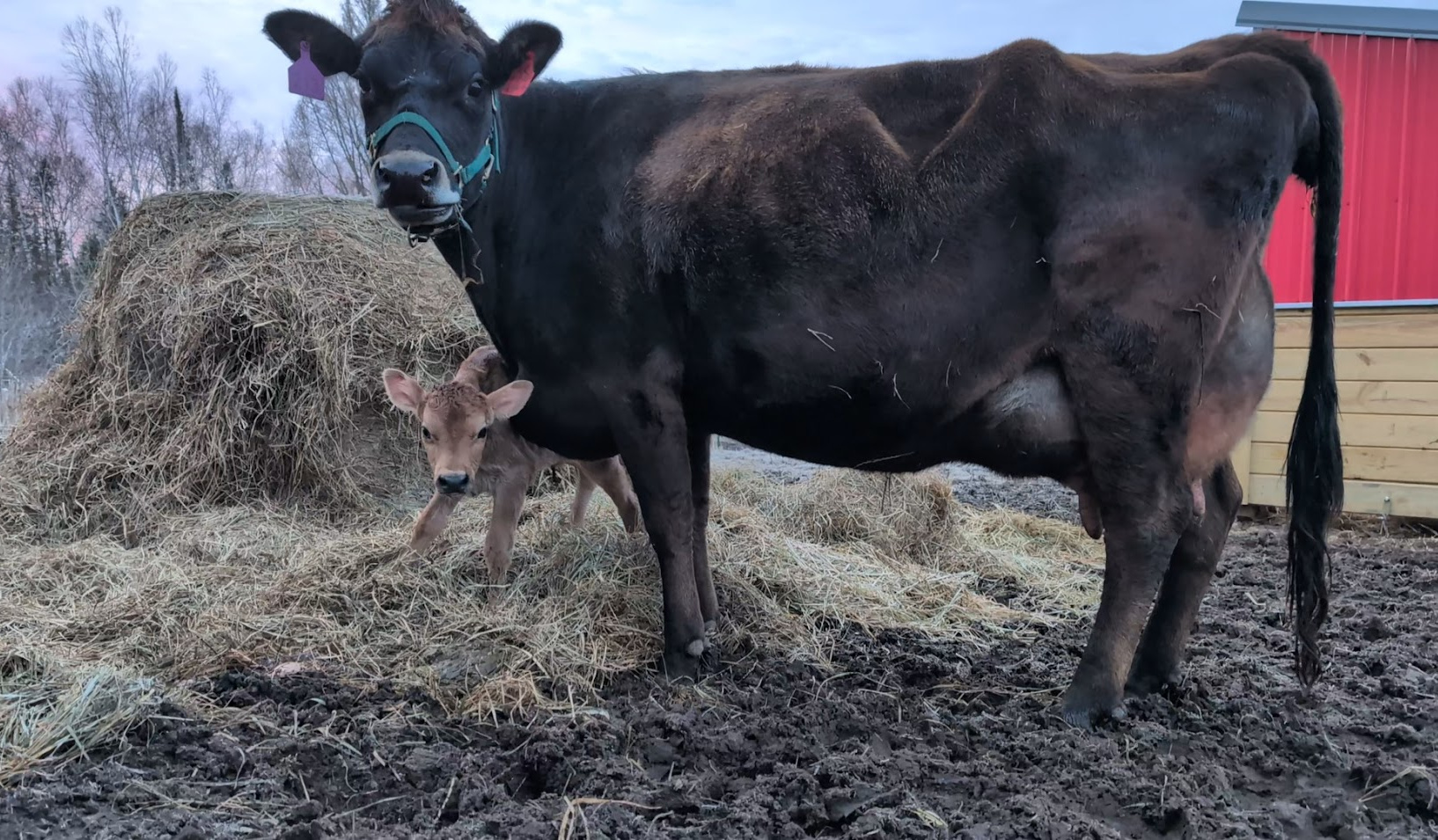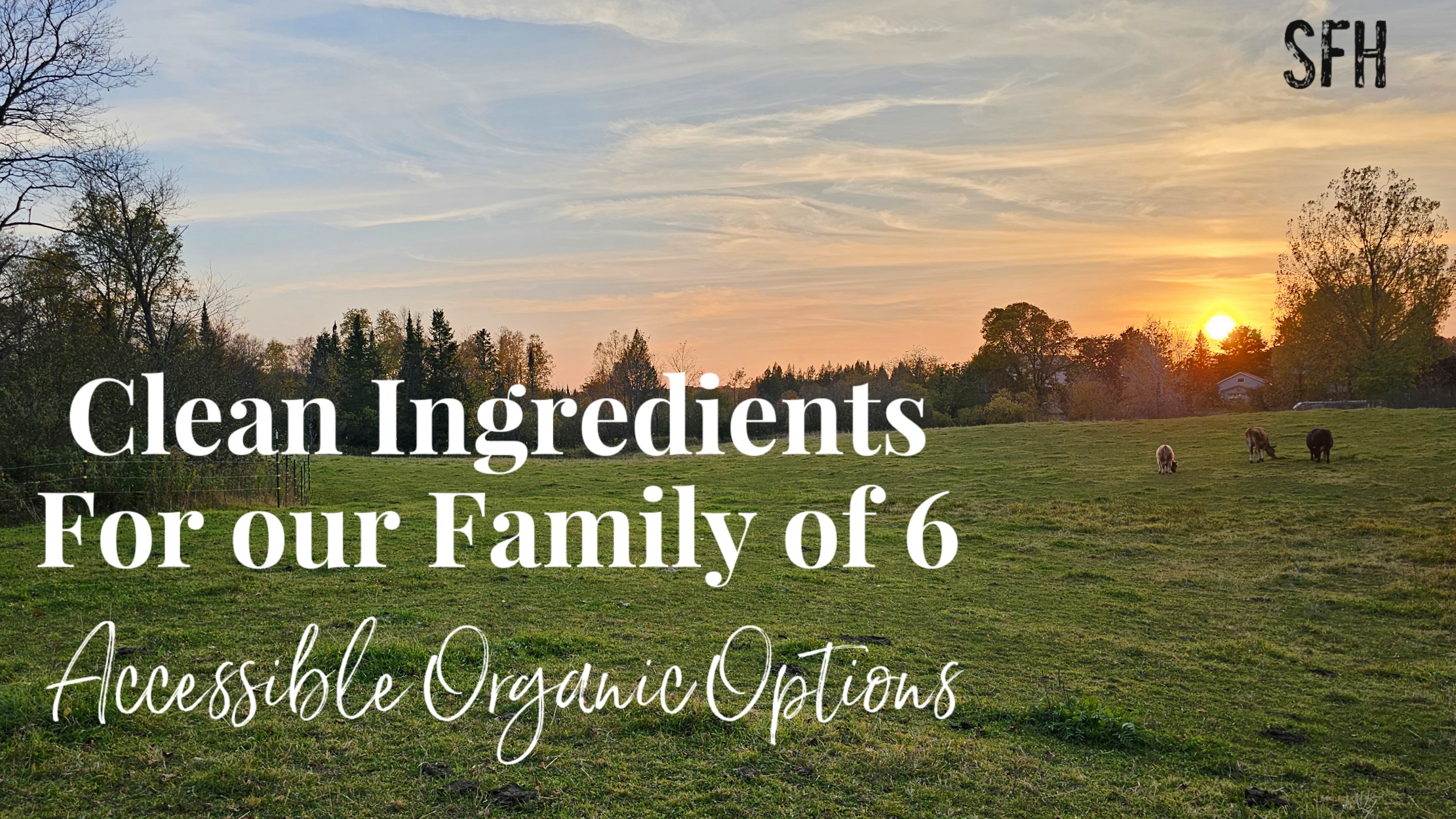We have been raising meat birds for over 10 years. It started as a project to feed our growing family, but before long we were also growing for our extended family and close friends. We raised small batches of birds, butchered them ourselves, and passed on the savings to our friends and family. As a result, most of our own meat was free after selling our surplus.
In 2023 we relocated to a larger farm and we started to expand fast! This led our meat program to grow to a size we could no longer butcher on our own. We began using a local, well known butcher. Bringing in 50 birds at a time on a strict schedule (8 week grow outs) we quickly discovered that utilizing a butcher would prove more complicated and costly than we originally thought. So, the question became “how we can maximize our profits while raising larger amounts of chickens without having to raise our prices?”
Our goals for our meat program moving forward include:
- Bigger birds, preferably in the 5-7lb range when dressed out
- Stable pricing in the $4/lb range
- Better feed conversion
- Establish a successful dual purpose program to provide laying hens, roosters for butcher, and hatching eggs for a self-sustaining flock
This past year our cornish cross meat birds did not grow particularly well, especially the early and late batches that both experienced cold weather. Overall, the growth was not what we had hoped by 8 weeks. In the past, we would have measured and estimated weights and butchered whenever we felt their growth and feed conversion had plateaued. With a strict schedule, the birds go to the butcher whether they are the optimal size or not. This led to more smaller sized chickens that we had hoped. Butcher costs are the same, regardless of the size of chicken, so distributing that cost over less weight made the investment per pound much higher than we had hoped. Our $4/lb price only made a small profit and the chicken bundles we sold were actually sold at a loss. (More on that on our youtube video.)
Moving forward, there are a few things we are changing.
- First, we are going to try some different hatchery options and see if one has faster growing birds without sacrificing health of the chickens.
- After researching, we believe we can maximize growth right around the 9-10 week range without sacrificing chickens to health issues. (If you are famililar with cornish cross, they tend to have heart and leg problems with age over 8 weeks.)
- We will start growing larger batches of chickens which will save on both purchase costs and butcher costs while condensing our season down into only the warmest months. Most hatcheries and our butcher give discounts when dealing with 100+ birds.
- Feeding meat birds 12 hours on, 12 hours off can help with feed conversion. We’ve never been incredibly strict with that recommendation, but we do plan to stick to that schedule while also boosting the protein level in our feed. We will have feed custom mixed at the feed store rather than buying their normal meat bird grain. Thankfully we have an amazing local feed store that will handle that request for us.
- We are going to invest in the Delaware breed of chickens to start a dual purpose flock, which will run among our cow pastures to help with pasture health. These birds will be grown out to 20 weeks before butcher. We will keep 10-12 hens and 2 roosters, run separately from our laying flock, to create a self-sustaining dual purpose flock. Extra hens will be sold as layers in the fall. (See our first failed dual purpose experience here: https://www.youtube.com/watch?v=ITDpg-d3aDE )
We are changing several factors at one time, which does lead to complications determining what really worked the best. However, we don’t have the time to change one variable at a time and we will have to see how this year turns out before making any more major changes.
What would you suggest to improve meat bird growth? What feed % and schedule have you found most successful? Join the conversation in the comments or on our youtube video linked at the top of this post!






